Recent Articles
Popular Makes
Body Types
10 Plug-in Hybrid SUVs - Current and Upcoming

2020 Lincoln Aviator exterior PHEV charger ・ Photo by Lincoln
Plug-in hybrid SUVs are becoming increasingly popular, thanks no doubt to their fuel-efficient powertrains. This technology allows these vehicles to help make up for one of the biggest drawbacks of typical sport-utility vehicles: their lower gas mileage.
Now, not all plug-in SUVs are exactly economical, but they can provide two major advantages over non-hybrids. First off, you can drive plug-in models for a practical distance using electricity alone. The second benefit comes if you do run out of electricity. At that point, the powertrain switches over to traditional gas-hybrid operation for hundreds of more miles of range — with higher mpg levels than their non-hybrid rivals, and none of the “range anxiety” you get from a purely electric vehicle.
2020 Kia Niro
Most mainstream companies are just getting into plug-in hybrid SUVs, but not Kia. The 2020 Kia Niro marks the third year for the brand’s subcompact PHEV (plug-in hybrid electric vehicle). To celebrate, the Niro has been refreshed for the new model year with updated design and technology features.
The vehicle remains impressively efficient, too, with an estimated all-electric driving range of 26 miles. You can also expect to travel about 525 more miles with the Niro using gasoline — although you won’t use very much. In its gas-hybrid mode, the Niro’s projected fuel-economy rating for combined driving is 46 mpg. Kia achieves those numbers with a four-cylinder engine, a lithium-ion battery, and an electric motor that work together for 139 horsepower and 195 pound-feet of torque.
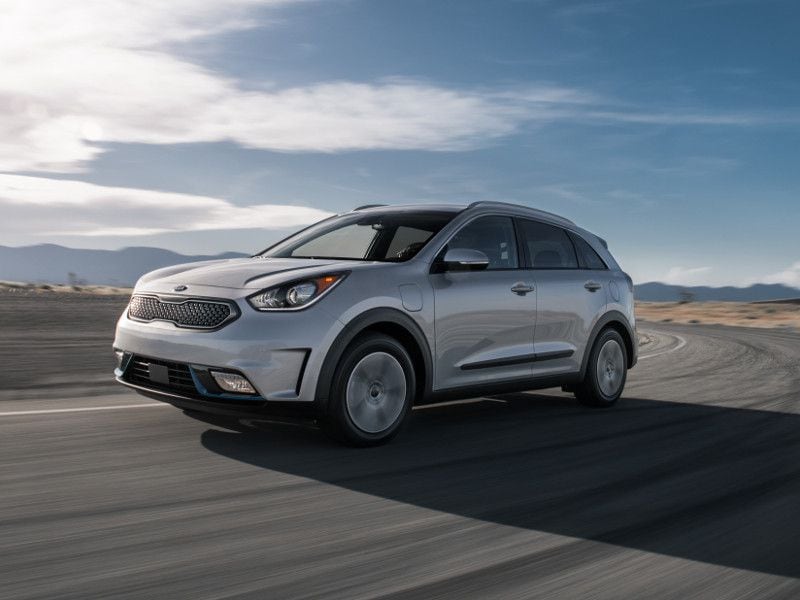
2021 Toyota RAV4
Toyota is among the mainstream brands that are preparing to launch plug-in hybrid SUVs. The automaker’s 2021 Toyota RAV4 PHEV — which was just introduced at the 2019 Los Angeles Auto Show — brings new levels of efficiency from a proven leader in hybrid technology.
That’s saying something, since the “regular” RAV4 hybrid can already post EPA fuel economy ratings of 41 mpg in the city, 38 mpg on the highway, and 40 mpg combined. And keep in mind that the RAV4 returns those ratings with electrically enabled all-wheel drive. As for the plug-in model, it raises the bar in terms of performance as well. In fact, it will be the most powerful RAV4 ever sold. Specific details are still to come, but the brand promises 302 horsepower for the plug-in version of its popular compact SUV.
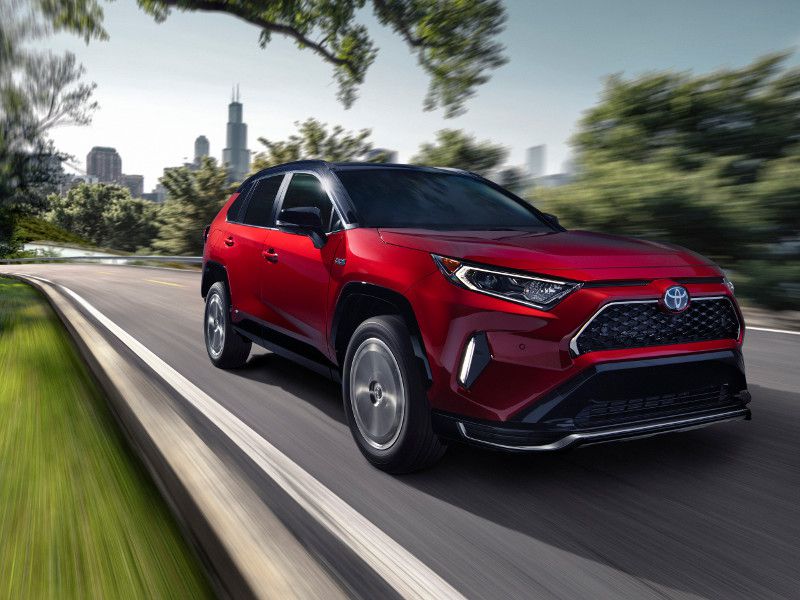
Photo by Toyota
2020 Ford Escape
After retiring the Ford C-Max Energi, the Blue Oval is getting back into plug-in hybrid SUVs with the 2020 Ford Escape. Of course, the Escape has a long history of showcasing new powertrain technology: The 2005 model was the very first vehicle from a U.S. automaker to be available with a traditional hybrid setup. Ford would go on to sell more than 114,000 hybrid Escapes before that powertrain went out of production for 2012.
The all-new model — due in the spring of 2020 — is designed to extend the original’s legacy significantly. Per Ford, the plug-in Escape “targets a best-in-class EPA-estimated pure-electric range of 30+ miles.” You can also look forward to new Escape technologies ranging from a digital instrument panel to evasive-steering assistance.
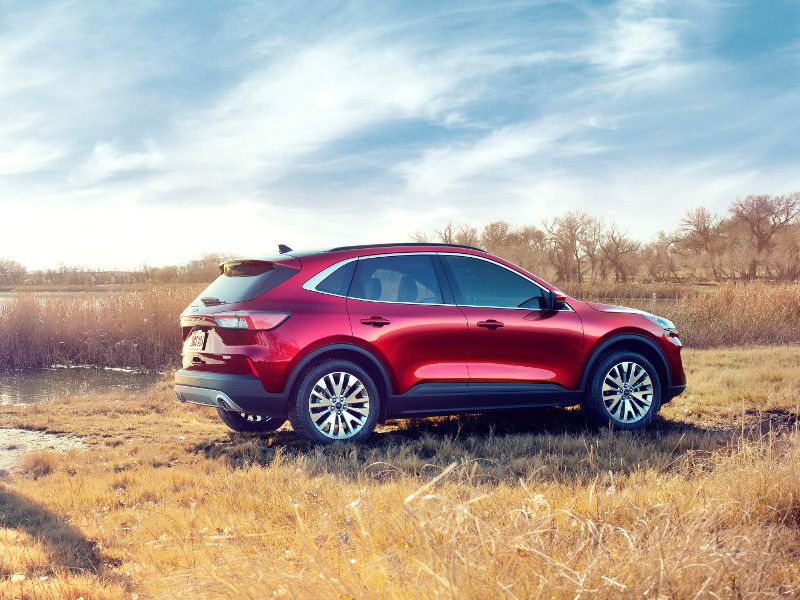
Photo by Ford
2020 Lincoln Aviator
The 2020 Lincoln Aviator follows the path of most premium plug-in hybrid SUVs. That means it’s not really all that efficient when being driven in gas-hybrid mode. Instead, the Aviator ups the ante at the extremes.
When you want to go green, the plug-in Aviator can go about 18 miles without using any gasoline at all. But Lincoln also leverages the Aviator’s lithium-ion battery and robust electric motor for extra output. Indeed, that hardware adds 94 horsepower and a mighty 215 pound-feet of torque to the Aviator’s standard twin-turbo V6. The result is a combined 494 horses with 630 pound-feet of torque, which is enough to tow 5,600 pounds. A new 10-speed automatic transmission and Lincoln’s intelligent all-wheel drive are also standard for the plug-in trim.
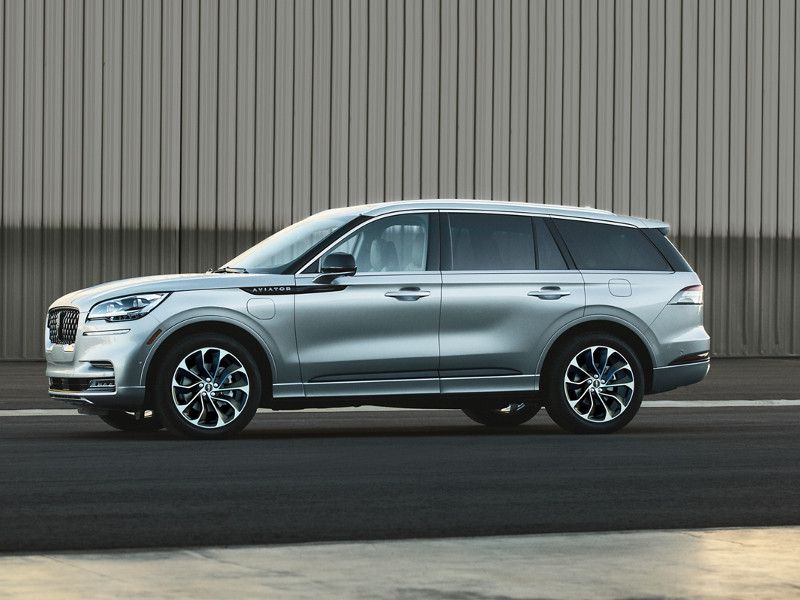
Photo by Lincoln
2020 Jeep Wrangler
The Jeep Wrangler isn’t known for its EPA ratings, yet it has been getting noticeably more efficient over the years. The current generation offers both mild-hybrid and turbodiesel powertrains, with the latter able to boost highway fuel efficiency into the 30-mpg range. For its next move, the Wrangler is expected to join the ranks of the latest plug-in hybrid SUVs.
Jeep is keeping a tight wrap on the project for now, but most signs point to a debut early in 2020 for the plug-in Wrangler. Also, beyond shrinking the Wrangler’s carbon footprint, the new powertrain could have another benefit for Jeep lovers. Some publications report that the plug-in system will be able to operate as a generator — supplying electricity at a campsite, for example.
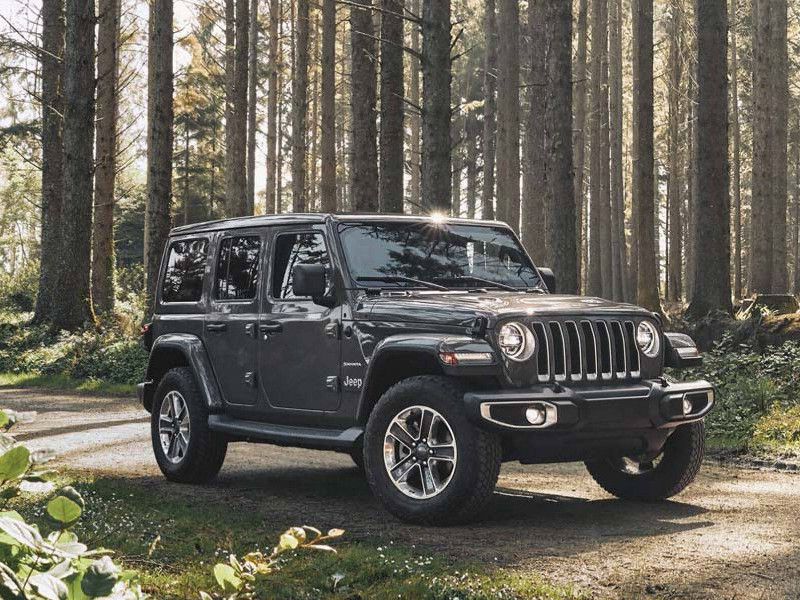
Photo by Fiat Chrysler Automobiles
2020 Land Rover Range Rover
Land Rover is taking a two-pronged approach to plug-in hybrid SUVs. Both the 2020 Land Rover Range Rover and 2020 Land Rover Range Rover Sport fit the bill. In either case, the so-called P400e powertrain — with a turbocharged four-cylinder engine, lithium-ion battery, and electric motor — is good for 398 horsepower and 472 pound-feet of torque.
However, we picked the Range Rover for today’s list because of its dimensions. It’s 197 inches in length, making it a few inches longer than the Sport version. Yet the Range Rover can travel 22 miles on electricity alone despite its more imposing road presence. Besides, the regular Range Rover PHEV is sporty on its own and can get from 0 to 60 in a mere 6.4 seconds.

2020 Porsche Cayenne
If you’re shopping for the sportiest plug-in hybrid SUVs, we recommend a visit to your local Porsche dealer. That’s where you’ll find the 2020 Porsche Cayenne Turbo S E-Hybrid — with a choice between a traditional SUV and a more coupe-like model.
These Cayenne models are spiced up with twin-turbo V8s for their plug-in powertrains, and those setups can unleash 670 horsepower and 663 pound-feet of torque. No other Cayenne trims make more output. When it’s time to fly, the Cayenne Turbo S E-Hybrids can hit a top speed of 183 mph and run from 0 to 60 in 3.6 seconds. Porsche also predicts an all-electric driving range of about 24 miles for the range-topping plug-in Cayennes, along with the same number of mpg in combined gas driving.
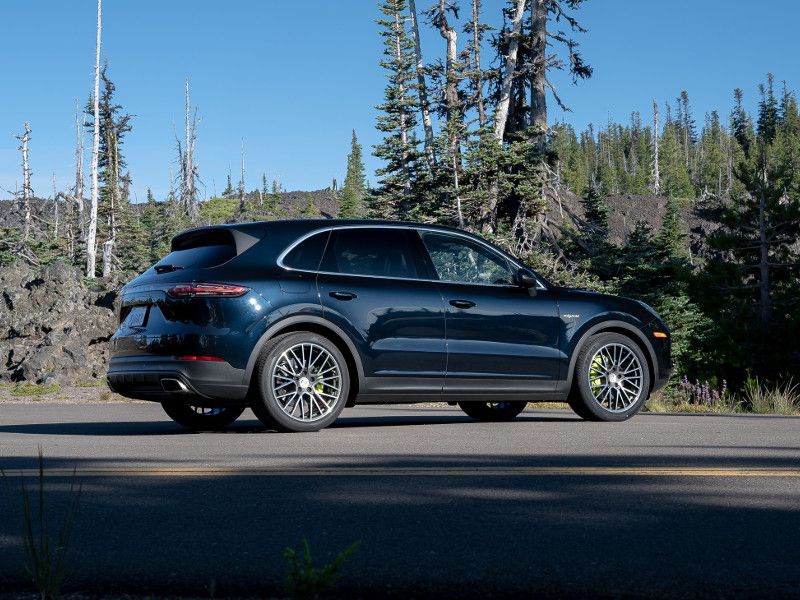
2020 Volvo XC60
Volvo is going all-in on plug-in hybrid SUVs, providing high-tech powertrains for its entire sport-utility lineup. That said, we’ll focus on the compact 2020 XC60 today. It’s the one that hits the sweet spot between the smaller XC40 and the larger XC90.
The XC60 PHEV can also hit 27 mpg in combined driving in its gas-hybrid mode, all while traveling approximately 500 miles. Running on electricity alone, the XC60 can travel close to 20 miles. The XC60 delivers that performance with the usual lithium-ion battery and electric motor combination as a starting point. But Volvo doubles down on forced induction for its actual engine. The four-cylinder unit is both turbocharged and supercharged. This raises the XC60’s combined 400 horsepower and 472 pound-feet of torque.

Photo by Volvo
2020 Mercedes-Benz GLC
The newly updated 2020 Mercedes-Benz GLC 350e 4Matic EQ Power combines a long name with a longer all-electric driving range than its predecessor. Scheduled to arrive in the United States in the first half of 2020, the new GLC PHEV is expected to enable roughly 24 miles of travel on electricity alone. This is more than double the range of the previous GLC plug-in.
Nor is the new model merely more efficient. It also carries a combined 315 horsepower and 516 pound-feet of torque that also makes the next-gen version more fun to drive. The automaker’s estimated 0-60 time is 5.6 seconds for the 2020 GLC plug-in hybrid.
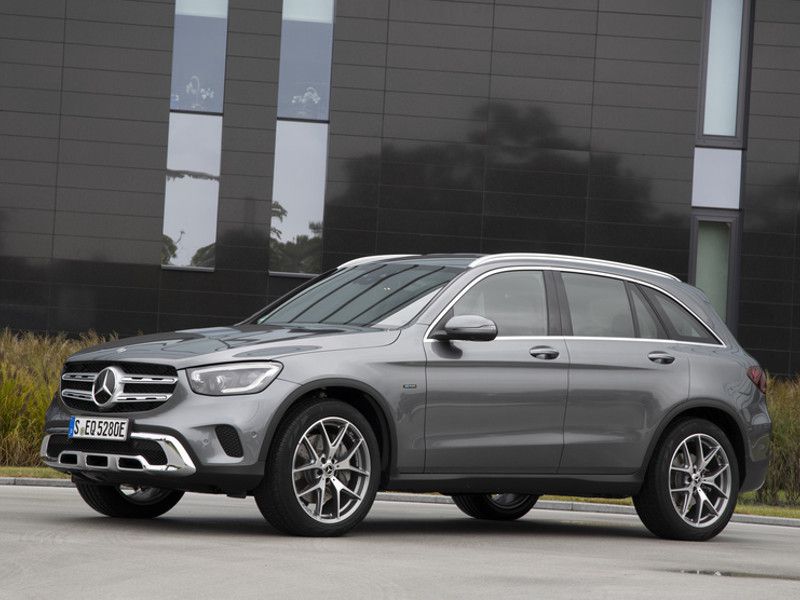
Photo by Mercedes-Benz
2021 BMW X5
New plug-in hybrid SUVs are also on their way from the other upscale German brands, including BMW — which must have gotten the Mercedes memo on complicated vehicle names. The 2021 BMW X5 xDrive45e iPerformance is on the calendar for a 2020 premiere with its own impressive plug-in powertrain.
The foundation? An inline six-cylinder engine that was developed specifically for this model. Paired with a lithium-ion battery and electric motor, the engine contributes to a combined 394 horsepower and 443 pound-feet of torque. On the one hand, this enables Mercedes-matching acceleration with the ability to get from 0 to 60 in 5.6 seconds. BMW plans on beating its rival for all-electric travel, though, with a range of more than 30 miles.
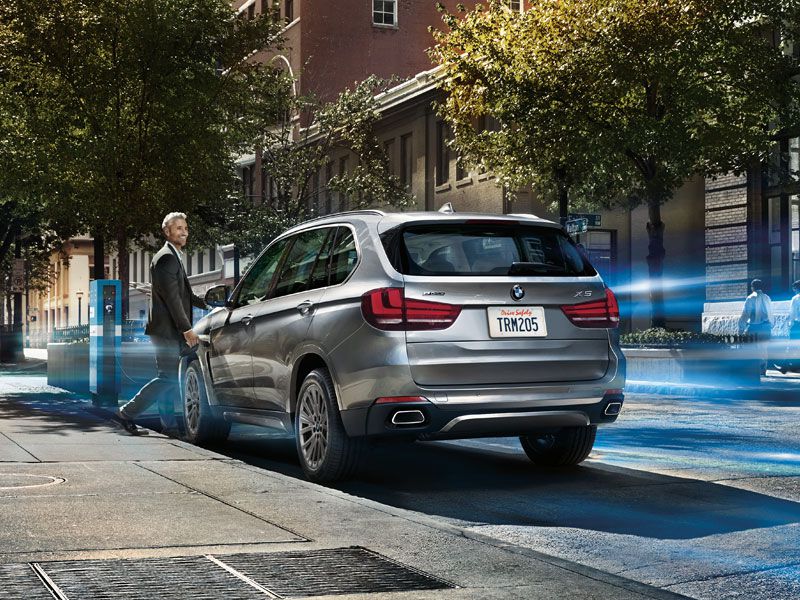
Photo by BMW